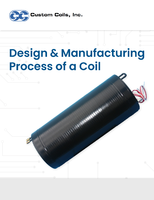Software prototypes radio frequency and microwave designs.
Press Release Summary:
CONCERTO v5 incorporates Finite Different Time Domain (FDTD) analysis method as well as CLASP analysis model based on Moment Method. Using CLASP module, only surfaces need to be modeled, and solved matrix systems can be stored for later use. QUICKWAVE FDTD modeler, as main analysis tool, includes Lorentz, Debye, and Drude models for dispersive media as well as magnetized ferrites to allow effects of dc biasing magnetic field to be superimposed on a material.
Original Press Release:
CONCERTO Version 5 RF/Microwave Simulation Software Adds Moment Method
(Aurora, IL; January 23, 2006) -- Vector Fields Inc. has introduced version 5 of its CONCERTO software suite for radio frequency (RF) and microwave design that incorporates a new CLASP analysis model based on the Moment Method. The Moment Method is ideally suited for applications with large volumes of free space, including radar cross section (RCS), antenna interaction, and antenna placement calculations such as determining the effect of placing an antenna on a fuselage. "By offering both the Moment Method and the Finite Different Time Domain (FDTD) analysis methods, CONCERTO provides users with the ability to choose the optimal tool for every RF/microwave analysis task," said Cris Emson, Vice President of Vector Fields.
When using the new CLASP module, only the surfaces of a model need to be modeled because the Moment Method represent volumes only by their surfaces. A major advantage of the Moment Method is that once the matrix system has been solved once, the matrix inverse can be stored for later use, allowing alternate source fields to be applied with little computing effort. So, for example, if a plane wave needs to be modeled from a different angle, it is very straightforward to quickly determine the fields without having to calculate a new solution. A finite element or FDTD approach would, on the other hand, require each new plane wave direction to be re-computed from scratch. Air volume is not meshed when using the Moment Method, so analyses involving coupling between antennas, such as antenna placements on masts or satellite systems, can be easily solved.
Version 5 also includes major improvements to the QUICKWAVE FDTD modeler, which is still the main analysis tool in CONCERTO Version 5. The Lorentz, Debye, and Drude models for dispersive media have been added to the new version. Magnetized ferrites have also been added, allowing for the effects of a DC biasing magnetic field to be superimposed on a material. The visualization of the simulation has been extended so that all of the field and S-Parameter values can be displayed during the analysis as it progresses. This helps designers understand how a device actually works. The new version adds the ability to display fields on different planes as well as the surface currents on the geometry. Another new feature is the ability to couple to 3D thermal modeling software, allowing thermal diffusion to be modeled and making it possible to include the effects of rotating loads for microwave heating applications.
CONCERTO Version 5 provides three different options that are all included on the program CD. The first option runs on single processor personal computers. The second is for dual-processor PCs and performs finite difference calculations on one processor and visualization of results on the second processor. The third option is for four-processor PCs. This multi-thread option updates the X, Y, and Z field components separately on three of the processors while using the fourth processor for visualization.
The modeler and solver are separate in CONCERTO Version 5 so the user has full access to the modeler while the solver is in use. The solver also has a stop and restart feature so long jobs can be suspended while smaller jobs are carried out.
CONCERTO provides the ideal environment for virtual prototyping of RF and microwave designs in a fraction of the time required to build and test physical prototypes. Models are created using a 3D geometric modeler that makes it possible to quickly generate simple or complex shapes. The QUICKWAVE FDTD simulator uses conforming mesh technology that makes it possible to model complex shapes and curved boundaries accurately, without adding to the overall size of the model or requiring a reduction in the time step. Advanced visualization tools make it possible to monitor the solution as it progresses and display the final results. A sophisticated macro parameter language can be used to parameterize models.
For further information, contact Vector Fields Inc., 1700 N Farnsworth Ave., Aurora, IL 60505. Phone: 630-851-1734, Fax: 630-851-2106, E-mail: (Lois Lee) llee@vectorfields.com, Web site: www.vectorfields.com




